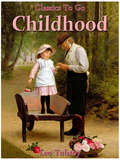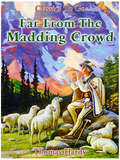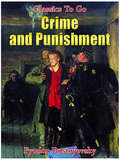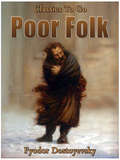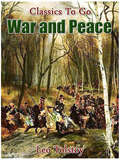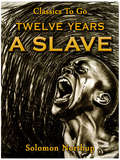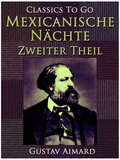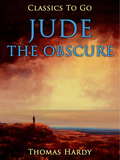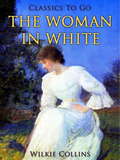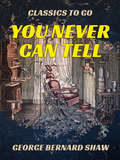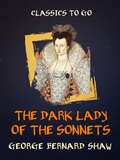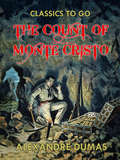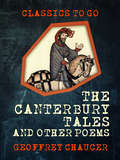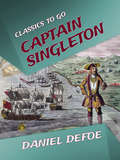- Table View
- List View
Klasse! A1: Deutsch für Jugendliche, Intensivtrainer
by Sarah Fleer Margret RodiNIMAC-sourced textbook
Klasse! A2: Deutsch für Jugendliche, Kursbuch mit Audios und Videos
by Sarah Fleer Ute Koithan Bettina Schwieger Tanja SieberNIMAC-sourced textbook
Klasse! A2: Deutsch für Jugendliche, Übungsbuch mit Audios
by Sarah Fleer Ute Koithan Bettina Schwieger Tanja SieberNIMAC-sourced textbook
Klasse! A2: Deutsch für Jugendliche, Intensivtrainer
by Sarah Fleer Margret Rodi Bettina SchwiegerNIMAC-sourced textbook
Portfolio Deutsch = German Textbook, Level 1
by Ute Koithan Theo Scherling Cordula Schurig Anna Hila Michael Koenig Sarah Fleer Alicia Padrós Anette Kannenberg Daniela Kohl Helen Schmitz Annerose Bergmann Angela Kilimann Linda Grätz Dagmar SchalliolNIMAC-sourced textbook
Portfolio Deutsch, German Textbook, Level 2
by Stefanie Dengler Sarah Fleer Paul Rusch Cordula Schurig Anette Kannenberg Daniela Kohl Angela Kilimann Annerose Bergmann Linda Grätz Dagmar SchalliolNIMAC-sourced textbook
Portfolio Deutsch, German Textbook, Level 3
by Stefanie Dengler Sarah Fleer Paul Rusch Cordula Schurig Annerose Bergmann Sabine Franke Linda Grätz Dagmar Schalliol Anette Kannenberg Daniela KohlNIMAC-sourced textbook
Portfolio Deutsch, German Textbook, Level 4
by Stefanie Dengler Sarah Fleer Paul Rusch Cordula Schurig Annerose Bergmann Sabine Franke Linda Grätz Dagmar Schalliol Anette Kannenberg Daniela KohlNIMAC-sourced textbook
geni@l klick: German Textbook Level 1
by Michael Koenig Ute Koithan Theo Scherling Yo Rühmer Barbara WelzelNIMAC-sourced textbook
Childhood: Revised Edition Of Original Version (Classics To Go #306)
by Leo Tolstoy"Childhood" is the first in a series of three novels and is followed by "Boyhood" and "Youth". Published when Tolstoy was just twenty-three years old, the book was an immediate success. "Childhood" is an exploration of the inner life of a young boy, Nikolenka, and one of the books in Russian writing to explore an expiressionistic style, mixing fact, fiction and emotions to render the moods and reactions of the narrator. (Excerpt from Wikipedia)
Far from the Madding Crowd: Revised Edition Of Original Version (Classics To Go)
by Thomas HardyGabriel Oak is a young shepherd. With the savings of a frugal life, and a loan, he has leased and stocked a sheep-farm. He falls in love with a newcomer eight years his junior, Bathsheba Everdene, a proud beauty who arrives to live with her aunt, Mrs. Hurst. She comes to like him well enough, and even saves his life once, but when he makes her an unadorned offer of marriage, she refuses; she values her independence too much and him too little. Gabriel's blunt protestations only serve to drive her to haughtiness. After a few days, she moves to Weatherbury, a village some miles off. When next they meet, their circumstances have changed drastically. An inexperienced new sheep dog drives Gabriel's flock over a cliff, ruining him. After selling off everything of value, he manages to settle all his debts, but emerges penniless. He seeks employment at a work fair in the town of Casterbridge, (a fictionalised version of Dochester). When he finds none, he heads to another fair in Shottsford, a town about ten miles from Weatherbury. On the way, he happens upon a dangerous fire on a farm and leads the bystanders in putting it out. When the veiled owner comes to thank him, he asks if she needs a shepherd. She uncovers her face and reveals herself to be none other than Bathsheba. She has recently inherited the estate of her uncle and is now a wealthy woman. Though somewhat uncomfortable, she hires him. Meanwhile, Bathsheba has a new admirer: the lonely and repressed William Boldwood. Boldwood is a prosperous farmer of about forty whose ardour Bathsheba unwittingly awakens when – her curiosity piqued because he has never bestowed on her the customary admiring glance – she playfully sends him a valentine sealed with red wax on which she has embossed the words "Marry me". Boldwood, not realising the valentine was a jest, becomes obsessed with Bathsheba, and soon proposes marriage. Although she does not love him, she toys with the idea of accepting his offer; he is, after all, the most eligible bachelor in the district. However, she postpones giving him a definite answer. When Gabriel rebukes her for her thoughtlessness, she fires him. When her sheep begin dying from bloat, she discovers to her chagrin that Gabriel is the only man who knows how to cure them. Her pride delays the inevitable, but finally she is forced to beg him for help. Afterwards, she offers him back his job and their friendship is restored... (Excerpt from Wikipedia)
Crime and Punishment: Revised Edition Of Original Version (Classics To Go #394)
by Fyodor DostoyevskyRodion Romanovich Raskolnikov, a former student, lives in a tiny garret on the top floor of a run-down apartment building in St. Petersburg. He is sickly, dressed in rags, short on money, and talks to himself, but he is also handsome, proud, and intelligent. He is contemplating committing an awful crime, but the nature of the crime is not yet clear. He goes to the apartment of an old pawnbroker, Alyona Ivanovna, to get money for a watch and to plan the crime. Afterward, he stops for a drink at a tavern, where he meets a man named Marmeladov, who, in a fit of drunkenness, has abandoned his job and proceeded on a five-day drinking binge, afraid to return home to his family. Marmeladov tells Raskolnikov about his sickly wife, Katerina Ivanovna, and his daughter, Sonya, who has been forced into prostitution to support the family. Raskolnikov walks with Marmeladov to Marmeladov’s apartment, where he meets Katerina and sees firsthand the squalid conditions in which they live.
Poor Folk: Revised Edition Of Original Version (Classics To Go #400)
by Fyodor Dostoyevsky“Poor Folk” is the first novel by Fyodor Dostoyevsky, written over the span of nine months between 1844 and 1845. Dostoyevsky was in financial difficulty because of his extravagant living and his developing gambling addiction. Varvara Dobroselova and Makar Devushkin are second cousins twice-removed and live across from each other on the same street in terrible apartments. Devushkin's, for example, is merely a portioned-off section of the kitchen, and he lives with several other tenants, such as the Gorshkovs, whose son who groans in agonising hunger almost the entire story and eventually dies. Devushkin and Dobroselova exchange letters attesting to their terrible living conditions and the former frequently squanders his money on gifts for her.
War and Peace: A Historical Novel, Volume 1... (Classics To Go)
by Leo TolstoyThe standard Russian text of "War and Peace" is divided into four books (fifteen parts) and an epilogue in two parts. "War and Peace" has a large cast of characters, the majority of whom are introduced in the first book. Some are actual historical figures, such as Napoleon and Alexander I. While the scope of the novel is vast, it is centred around five aristocratic families. The plot and the interactions of the characters take place in the era surrounding the 1812 French invasion of Russia during the Napoleonic Wars. (Excerpt from Wikipedia)
Twelve Years a Slave: Revised Edition Of Original Version (Classics To Go)
by Solomon Northup"Twelve Years a Slave" (1853) is a memoir and slave narrative by Solomon Northup, as told to and edited by David Wilson. Northup, a black man who was born free in New York, details his kidnapping in Washington, D.C. and subsequent sale into slavery. After having been kept in bondage for 12 years in Louisiana by various masters, Northup was able to write to friends and family in New York, who were in turn able to secure his release. Northup's account provides extensive details on the slave markets in Washington, D.C. and New Orleans and describes at length cotton and sugar cultivation on major plantations in Louisiana. (Excerpt from Wikipedia)
A Damsel in Distress: Revised Edition Of Original Version (Classics To Go)
by P. G. WodehouseGolf-loving American composer George Bevan falls in love with a mysterious young lady who takes refuge in his taxicab one day; when he tracks her down to a romantic rural manor, mistaken identity leads to all manner of brouhaha...(Excerpt from Wikipedia)
Mexikanische Nächte - Zweiter Teil (Classics To Go)
by Gustave AimardAus dem Buch: "Am 2. Juli 18.., kamen gegen vier Uhr Nachmittags, in dem Augenblicke, wo die schon tief am Horizonte stehende Sonne nur noch schräge Strahlen auf die von der Hitze durchdrungene Erde wirft und die sich erhebende Brise die glühende Atmosphäre zu erfrischen beginnt, zwei gut berittene Reisende aus einem dichten Jucca-, Bananen- und Bambusgehölz und schlugen einen staubigen Weg ein, der in ununterbrochenen Stufenreihen zu einem Thale führte, worin ein klarer, durch das Grün sich hinschlängelnder Bach eine sanfte Kühlung unterhielt..."
Jude the Obscure
by Thomas HardyPowerful and controversial from its 1895 publication to the present, Jude the Obscure scandalized Victorian critics, who condemned it as decadent, indecent, and degenerate. Between its frank portrayals of sexuality and its indictments of marriage, religion, and England's class system, the novel offended a broad swath of readers. Its heated reception led the embittered author to renounce fiction, turning his considerable talents ever afterward to writing poetry.Hardy's last novel depicts a changing world, where a poor stonemason can aspire to a university education and a higher place in society--but where in reality such dreams remain unattainable. Thwarted at every turn, Jude Hawley abandons his hopes, is trapped into an unwise marriage, and pursues a doomed relationship with his free-spirited cousin, Sue Bridehead. The lovers find themselves equally incapable of living within the conventions of their era and of transcending its legal and moral strictures. Hailed by modern critics as a pioneering work of feminism and socialist thought, Hardy's tragic parable continues to resonate with readers.
The Woman in White: A Novel (part Two) And Short Stories: The Dead Alive; The Fatal Cradle; Fatal Fortune; Blow Up With The Brig (Classics To Go #Vol. 1)
by Wilkie CollinsWilliam Wilkie Collins (8 January 1824 – 23 September 1889) was an English novelist, playwright, and author of short stories. His best-known works are “The Woman in White”, “The Moonstone”, “Armadale”, and “No Name”. “The Woman in White” is Wilkie Collins' fifth published novel, written in 1859. It is considered to be among the first mystery novels and is widely regarded as one of the first (and finest) in the genre of "sensation novels". The story is sometimes considered an early example of detective fiction with the hero, Walter Hartright, employing many of the sleuthing techniques of later private detectives. The use of multiple narrators draws on Collins's legal training, and as he points out in his Preamble: "the story here presented will be told by more than one pen, as the story of an offence against the laws is told in Court by more than one witness". In 2003, Robert McCrum writing for The Observer listed The Woman in White number 23 in "the top 100 greatest novels of all time", and the novel was listed at number 77 on the BBC's survey The Big Read. (Excerpt from Wikipedia)
You Never Can Tell: A Pleasant Play (Classics To Go)
by George Bernard ShawYou Never Can Tell is an 1897 four-act play by George Bernard Shaw that debuted at the Royalty Theatre. It was published as part of a volume of Shaw's plays entitled Plays Pleasant. In June 2011, the play was revived at the Coliseum Theatre in Aberystwyth, Wales, where it had been performed exactly one century earlier. (Excerpt from Wikipedia)
The Dark Lady of the Sonnets: With Prefaces (Classics To Go)
by George ShawThe Dark Lady of the Sonnets is a 1910 short comedy by George Bernard Shaw in which William Shakespeare, intending to meet the "Dark Lady", accidentally encounters Queen Elizabeth I and attempts to persuade her to create a national theatre. The play was written as part of a campaign to create a "Shakespeare National Theatre" by 1916. (Excerpt from Wikipedia)
The Count of Monte Cristo: In English Translation (Classics To Go)
by Alexandre DumasThe book is considered a literary classic today. According to Luc Sante, "The Count of Monte Cristo has become a fixture of Western civilisation's literature, as inescapable and immediately identifiable as Mickey Mouse, Noah's flood, and the story of Little Red Riding Hood. (Wikipedia)
The Canterbury Tales, and Other Poems: With Other Poems Of Chaucer And Spenser; Edited For Popular Perusal, With Current Illustrative And Explanatory Notes (classic Reprint) (Classics To Go)
by Geoffrey ChaucerThe Canterbury Tales is a collection of 24 stories written in Middle English by Geoffrey Chaucer between 1387 and 1400. In 1386, Chaucer became Controller of Customs and Justice of Peace and, in 1389, Clerk of the King's work. It was during these years that Chaucer began working on his most famous text, The Canterbury Tales. The tales (mostly written in verse, although some are in prose) are presented as part of a story-telling contest by a group of pilgrims as they travel together from London to Canterbury to visit the shrine of Saint Thomas Becket at Canterbury Cathedral. The prize for this contest is a free meal at the Tabard Inn at Southwark on their return. (Wikipedia)
Captain Singleton: The Life, Adventures, And Piracies Of Captain Singleton (Classics To Go)
by Daniel DefoeThe book tells the story of Bob Singleton, who had been kidnapped as a boy from a good home and grew up with no real home. He came aboard a ship and eventually ended up being cast on an island with other crewmen. They managed to get to Africa and about the first half of the novel deals with the company's travel through Africa until they found a port from which they could get back to Europe. After their return there Singleton became member of another ships' crew and after a mutiny they led the lives of pirates with Singleton as their captain, which mostly covers the last half of the book, finishing in Singleton and a friend being repentant, leaving of their (successful) lives as pirates and returning home in disguise to find a peaceful life. (Excerpt from Goodreads)

